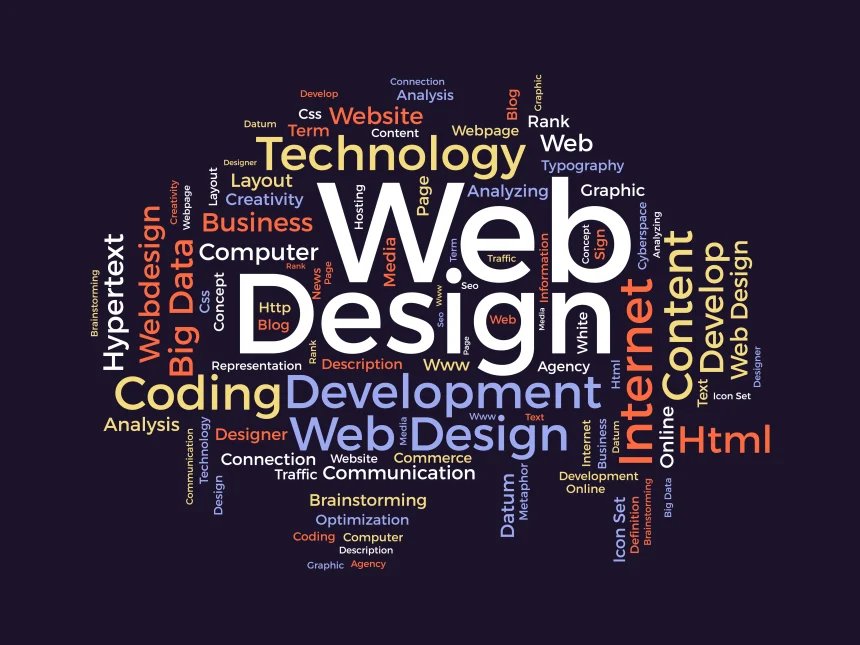Typography is a powerful yet underrated aspect of digital design. Regardless of whether you are opening a new business location or rebranding an online store, font selection will affect the perception of your audience that receives the message. In web design, every decision will affect the way your visitors perceive your message and your brand personality. Font style, size, weight, and spacing can enhance clarity or disrupt trust. For businesses in Dubai seeking to stand out online, thoughtful type choices can drive sales and engagement. At AdWeb Studio, we help clients build digital presence using precise typographic decisions to support their visual strategies. This article examines the impact of fonts on branding, usability, and conversions. You’ll see how type choices reinforce identity, maintain consistency across visuals, support accessibility, and build trust.
First Impressions and Emotional Tone
Fonts set the emotional tone at first glance. Serif fonts have a sense of tradition and solidity, whereas sans-serif fonts are clean and contemporary. This initial emotional impact helps shape brand identity through fonts, creating a visual expectation before any content is read. A font that fits your industry makes the visitor feel in line with your message. As an example, a tech startup may be more likely to choose clean and geometric faces, and a boutique brand can select elegant script or stylized serif fonts. Recall is also boosted by the use of similar fonts on the logo, the headings and body text. Emotional tone matters deeply online because it shapes trust. If visitors interpret the wrong mood, they may bounce quickly. Investing in the right typeface gives your brand personality, sets expectations, and supports conversion by aligning feelings with function.
Readability and Accessibility
Regardless of how beautiful your design is, if the content cannot be read, then it has failed. Typography determines ease of reading. Typography determines ease of consumption. Line length, letter spacing, and font weight all impact legibility across devices. Good line height and size improve reading flows. Simple, clean fonts reduce strain, especially on mobile screens. A thoughtful approach to choosing typography for websites ensures that headings, paragraphs, and buttons all support comprehension. Contrast between text and background affects clarity, too. Accessibility guidelines suggest fonts that display correctly at various resolutions. For non-native readers or older audiences, especially, high legibility matters. Web designers who prioritize accessibility win users’ trust and support SEO. Your content becomes inclusive and welcomes wider audiences. A readable type system increases time on page and supports the overall message. Clear fonts equal effective communication.
Font Pairing and Brand Cohesion
Font matching is art and science. The designers usually mix two typefaces, one is a headline typeface and the other is a body text. When properly performed, this brings visual interest without breaking the flow. Poor pairing, however, creates visual tension and breaks focus. Businesses looking for typography for brand consistency benefit from choosing fonts that complement each other in weight, proportion, and character. Cohesive type selections reflect professionalism and branding discipline. The type hierarchy should be clear—readers must know what to read first. Using consistent type rules across pages helps guide user behaviour. This cohesion reduces bounce rates and builds trust. Font pairing should follow clear spacing and sizing systems to maintain alignment on all devices. Consistency in typography works quietly to strengthen messaging, which is powerful for any brand aiming for growth and credibility
Typography and Visual Hierarchy
Typography defines what content is most important. A large, bold heading captures attention while body text delivers detail. Subheadings, captions, and button labels must follow visual logic. This hierarchy helps users scan and find what matters. In well-designed interfaces, typography directs behaviour without confusion. Aligning size, weight, and colour builds structure. Fonts should support this logic instead of competing with it. When font sizing is inconsistent or overstyled, users get distracted. In projects emphasizing web design and font style, this hierarchy becomes a tool for simplifying complex content. Businesses must guide visitors with clear steps, from awareness to action. The proper use of hierarchy improves engagement, reduces friction, and encourages deeper interaction. Whether it’s guiding a reader to a form or prompting them to scroll, typographic decisions lead the way. That’s why design teams must treat type systems as carefully as colour palettes or images.
Trust, Credibility, and Brand Perception
Fonts do not simply show information, but they influence the attitude of users toward it. A trustworthy font serves as a credibility booster, and an unprofessional one creates doubt. Companies that use quality typography in web design Dubai convey honesty and concern. Crappy or old-fashioned fonts imply the contrary. Just as the product packaging in retail stores affects digital trust, fonts do the same. This is particularly crucial to ecommerce, service providers and content platforms. Brand conveys its personality through typography, playful, serious, modern or elegant. Selecting a font that is appropriate to your tone increases the compatibility with your audience. The brands that carry the same tone throughout, including logos, navigation bars, etc., are remembered. That visual trust factor can make a visitor a buyer or not. In a nutshell, typography creates brand loyalty as well as logos or slogans.
Conversion and Sales Impact
Design has a say in the conversions, and typography is the major component of this equation. Clear CTAs (calls to action), legible pricing, and persuasive headings guide user behaviour. The type must supplement action, not interfere with it. The appropriate font boosts readability and credibility, resulting in a higher conversion rate. Descriptions should be swimmable on product pages. Pricing details need emphasis. Forms should be friendly, not frightening. Typography, which is a combination of aesthetics and clarity, is interactive. The clarity is even more important on mobile devices. The choice of types directly influences the length of stay and the next activity of users. The best fonts sell subtly—they highlight benefits and ease decision-making. It is not just graphics or layout conversion-focused design. Typography helps in clarity, speed, and trust, which are vital to the outcomes. In the case of businesses, the improved fonts can result in quantifiable KPIs improvement. It is an aspect that makes money.
User Behaviour Analytics and Typography
Typography influences not only the design but also the information. A poor structure or a difficult-to-read font raises bounces. Analytics sites monitor which links are clicked on, the duration of time spent and what is not. In case analytics show that people drop off at some point, it could be because of bad typography. There is increased engagement with time when using professional font systems in business. Well-organized pages are used more by the users. Visitors read deeper when there is skimming content. The data associated with the selection of typography on websites can show how big the difference in presentation of texts can be in user journeys. Confusion-reducing fonts decrease bounce rates.
Conclusion
Typography is another foundation of online branding. Fonts help in user flow, visual hierarchy, and emotional connection, starting with the initial impressions and ending with conversions. They relate design to business objectives and contribute to the development of valuable relationships with the customers. In competitive markets, brands that take Typography seriously shine.
FAQs
What is the impact of font style on user perception?
The font type influences the way the brand looks professional, fun, or serious. It affects trust and emotional tone as well.
How can we make typography mobile-friendly?
Use scalable dimensions such as ems, test on a variety of screen sizes, and select web-safe fonts that are optimized.
Does typography influence SEO?
Yes. The readability and ease of comprehension are also beneficial to SEO because of the longer time on site and reduced bounce rates.
What fonts should I use in line with my brand?
Think about your brand values, industry and audience. Then choose fonts that will resonate with the brand message.







